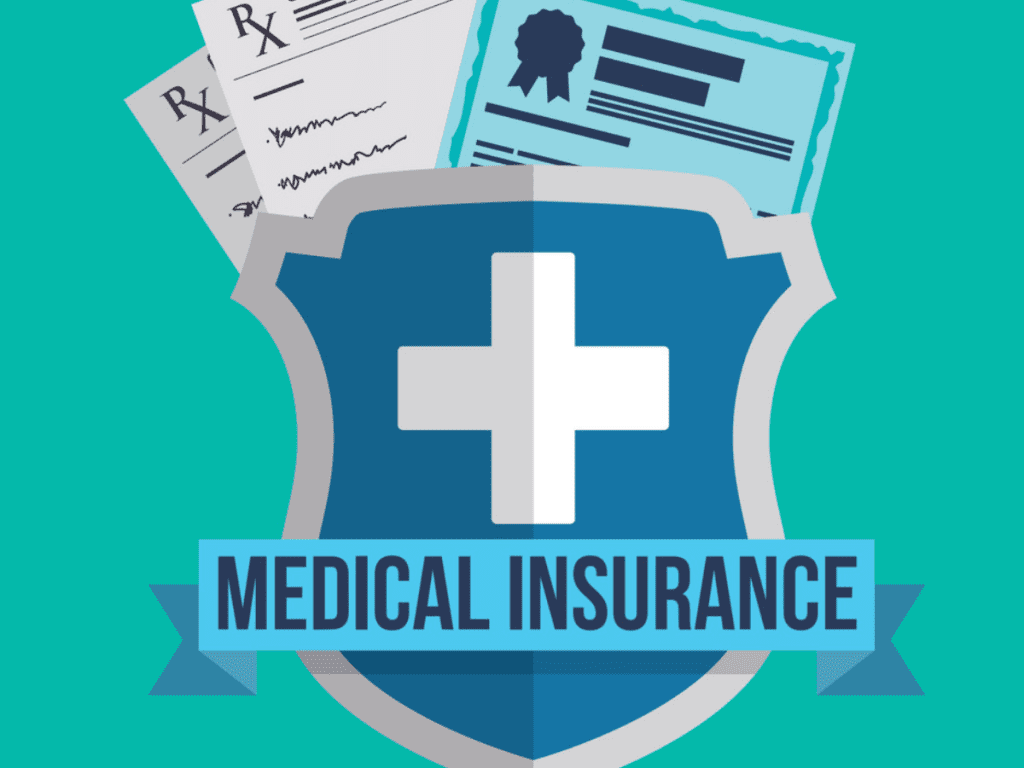Introduction
Medical insurance plays a crucial role in ensuring that individuals have access to quality healthcare when they need it the most. It helps to manage the financial burden of medical expenses, providing a safety net for unexpected health issues, chronic conditions, and preventive care. In many countries, having medical insurance is not only a practical necessity but often a legal requirement. This comprehensive guide will examine the different types of medical insurance available, highlighting their unique features, benefits, and how they fit into various healthcare systems.
1. Health Maintenance Organization (HMO) Insurance
Health Maintenance Organizations (HMOs) are one of the most common types of medical insurance plans in the United States. HMOs focus on providing comprehensive care to their members through a network of doctors, specialists, hospitals, and other healthcare providers.
Features of HMO:
- Primary Care Physician (PCP): Members must choose a primary care physician who serves as the first point of contact for most medical issues. A referral from the PCP is typically required to see specialists.
- Network-based Care: Care is provided within a network of approved doctors and hospitals. If a member goes outside the network, they usually have to pay out-of-pocket costs, unless it is an emergency.
- Preventive Care: HMO plans often emphasize preventive care, including regular check-ups, vaccinations, and screenings to detect potential health issues early.
Pros:
- Low out-of-pocket costs for routine visits.
- A focus on preventive care to reduce overall healthcare expenses.
- Predictable monthly premiums and low copayments.
Cons:
- Limited flexibility in choosing healthcare providers.
- Referrals are required to see specialists, which may delay access to specialized care.
- Out-of-network care is generally not covered, except in emergencies.
2. Preferred Provider Organization (PPO) Insurance
Preferred Provider Organizations (PPOs) offer more flexibility compared to HMOs in terms of healthcare providers and specialist access. A PPO plan allows members to see any doctor or specialist without a referral, although there are financial incentives for using network providers.
Features of PPO:
- No Referral Requirement: Members can visit any healthcare provider, including specialists, without needing a referral from a primary care physician.
- Network Flexibility: PPOs maintain a network of preferred providers, but members can also choose to see out-of-network providers. However, going outside the network typically results in higher out-of-pocket costs.
- Higher Premiums: Due to the increased flexibility and access, PPO plans usually come with higher premiums and higher out-of-pocket costs than HMOs.
Pros:
- Greater freedom to choose healthcare providers without the need for referrals.
- Access to both in-network and out-of-network providers.
- No need for a primary care physician, which gives members more control over their healthcare.
Cons:
- Higher premiums compared to HMO plans.
- Higher out-of-pocket costs if using out-of-network services.
- Less emphasis on preventive care and cost containment.
3. Exclusive Provider Organization (EPO) Insurance
Exclusive Provider Organizations (EPOs) are similar to PPOs but with a few key differences. Like PPOs, EPO plans offer a broad network of healthcare providers. However, EPOs do not cover any out-of-network care except in emergencies.
Features of EPO:
- No Out-of-Network Coverage: Except in emergencies, EPO plans do not offer coverage for out-of-network services.
- No Referral Requirement: Like PPOs, members can access specialists and other healthcare services without needing a referral.
- Network Care: EPO members must use the network of doctors and hospitals, which provides some cost savings compared to PPO plans.
Pros:
- No need for a referral to see specialists.
- Lower premiums than PPOs.
- Emphasis on in-network care with predictable out-of-pocket costs.
Cons:
- Limited to a specific network of healthcare providers.
- No coverage for out-of-network care except in emergencies.
- Less flexibility compared to PPOs.
4. Point of Service (POS) Insurance
Point of Service (POS) plans are a hybrid between HMOs and PPOs. Like HMOs, POS plans require members to choose a primary care physician. However, like PPOs, members can seek care outside the network at a higher cost.
Features of POS:
- Primary Care Physician: Members must select a PCP, who coordinates all of their care and provides referrals for specialists.
- In-Network and Out-of-Network Care: Members can access both in-network and out-of-network care. However, going out-of-network typically results in higher costs.
- Referral Requirement: Similar to HMOs, a referral from the PCP is required to see specialists or receive certain services.
Pros:
- Lower premiums and out-of-pocket costs compared to PPOs.
- The flexibility to seek care outside the network, although at a higher cost.
- Coordination of care through a primary care physician.
Cons:
- Requires referrals for specialist visits, which may limit access to care.
- Out-of-network care is more expensive and may not be covered unless deemed medically necessary.
- Limited flexibility compared to PPO plans.
5. Catastrophic Health Insurance
Catastrophic health insurance plans are designed for young, healthy individuals who want to protect themselves against major medical expenses, such as serious accidents or illnesses. These plans have low monthly premiums but high deductibles.
Features of Catastrophic Health Insurance:
- Low Premiums: These plans have lower premiums compared to most other health insurance plans.
- High Deductibles: Members must pay a significant deductible before insurance coverage kicks in.
- Coverage for Major Health Events: Catastrophic insurance covers essential health benefits after the deductible is met, including hospitalization, surgery, and emergency care.
Pros:
- Low monthly premiums make this an affordable option for young, healthy individuals.
- Protects against the financial burden of major medical events.
- Covers essential health benefits after meeting the deductible.
Cons:
- High deductibles can make this plan less useful for regular or preventative healthcare needs.
- Limited coverage before the deductible is met.
- May not be suitable for those with ongoing healthcare needs.
6. Health Savings Account (HSA)-Eligible Plans
Health Savings Accounts (HSAs) are tax-advantaged accounts that allow individuals to save money for future healthcare expenses. These plans are paired with high-deductible health plans (HDHPs) and offer individuals greater control over their healthcare spending.
Features of HSA-Eligible Plans:
- High Deductible Health Plans (HDHPs): HSA plans are typically linked with high-deductible health plans, meaning that individuals must pay a higher deductible before insurance coverage begins.
- Tax Advantages: Contributions to an HSA are tax-deductible, and withdrawals for medical expenses are tax-free.
- Flexible Spending: Funds in the HSA roll over from year to year, allowing individuals to accumulate savings for future healthcare needs.
Pros:
- Tax savings on contributions and withdrawals.
- Flexibility in how funds are used, with no “use it or lose it” rule.
- Control over how and when healthcare expenses are paid.
Cons:
- High deductibles can result in higher out-of-pocket costs before insurance coverage begins.
- Requires discipline in saving and managing healthcare funds.
- Not suitable for those who require regular or costly healthcare.
7. Medicare
Medicare is a federal health insurance program primarily for individuals aged 65 and older, as well as some younger individuals with disabilities. Medicare consists of different parts, each offering specific types of coverage.
Features of Medicare:
- Part A: Covers hospital services, including inpatient care, hospice care, and some home healthcare services.
- Part B: Covers outpatient care, including doctor visits, outpatient hospital services, and some preventive services.
- Part D: Provides prescription drug coverage.
- Medicare Advantage (Part C): A private insurance alternative that offers all the benefits of Parts A and B, often with additional coverage, such as vision, dental, and prescription drugs.
Pros:
- Provides health insurance for older adults and those with disabilities.
- Several options for coverage, including original Medicare and Medicare Advantage plans.
- Access to a wide range of healthcare services, including hospital care, doctor visits, and prescription drugs.
Cons:
- Medicare may not cover all healthcare needs, such as long-term care, dental, or vision services.
- Out-of-pocket costs can still be significant, especially for those with additional health needs.
- Not all services are covered under the standard Medicare plans, leading to potential gaps in coverage.
8. Medicaid
Medicaid is a joint federal and state program that provides health insurance to low-income individuals, families, and people with disabilities. Eligibility requirements and coverage options vary from state to state.
Features of Medicaid:
- State-Specific Programs: Each state administers its own Medicaid program, so coverage and eligibility requirements may vary.
- Comprehensive Coverage: Medicaid typically covers a wide range of services, including hospital care, outpatient care, preventive services, prescription drugs, and long-term care.
- Eligibility: Individuals must meet specific income and other eligibility criteria to qualify for Medicaid.
Pros:
- Provides comprehensive health coverage for low-income individuals.
- No or low cost for eligible individuals.
- Covers a wide range of healthcare services, including long-term care.
Cons:
- Eligibility requirements vary by state and may change frequently.
- Some states may have limited coverage options or long wait times for services.
- Medicaid programs are often subject to budget cuts or other limitations.
Conclusion
The landscape of medical insurance is diverse, with numerous plans catering to different needs and preferences. Whether you are a young, healthy individual seeking catastrophic coverage, an older person relying on Medicare, or someone looking for a flexible PPO or HMO plan, there is a medical insurance option that can meet your needs. Understanding the unique features, pros, and cons of each plan can help you make an informed decision about which type of medical insurance is best suited to your personal health and financial situation. It is always advisable to carefully evaluate your options and seek professional guidance when needed to ensure that you choose the right coverage for yourself and your family.

